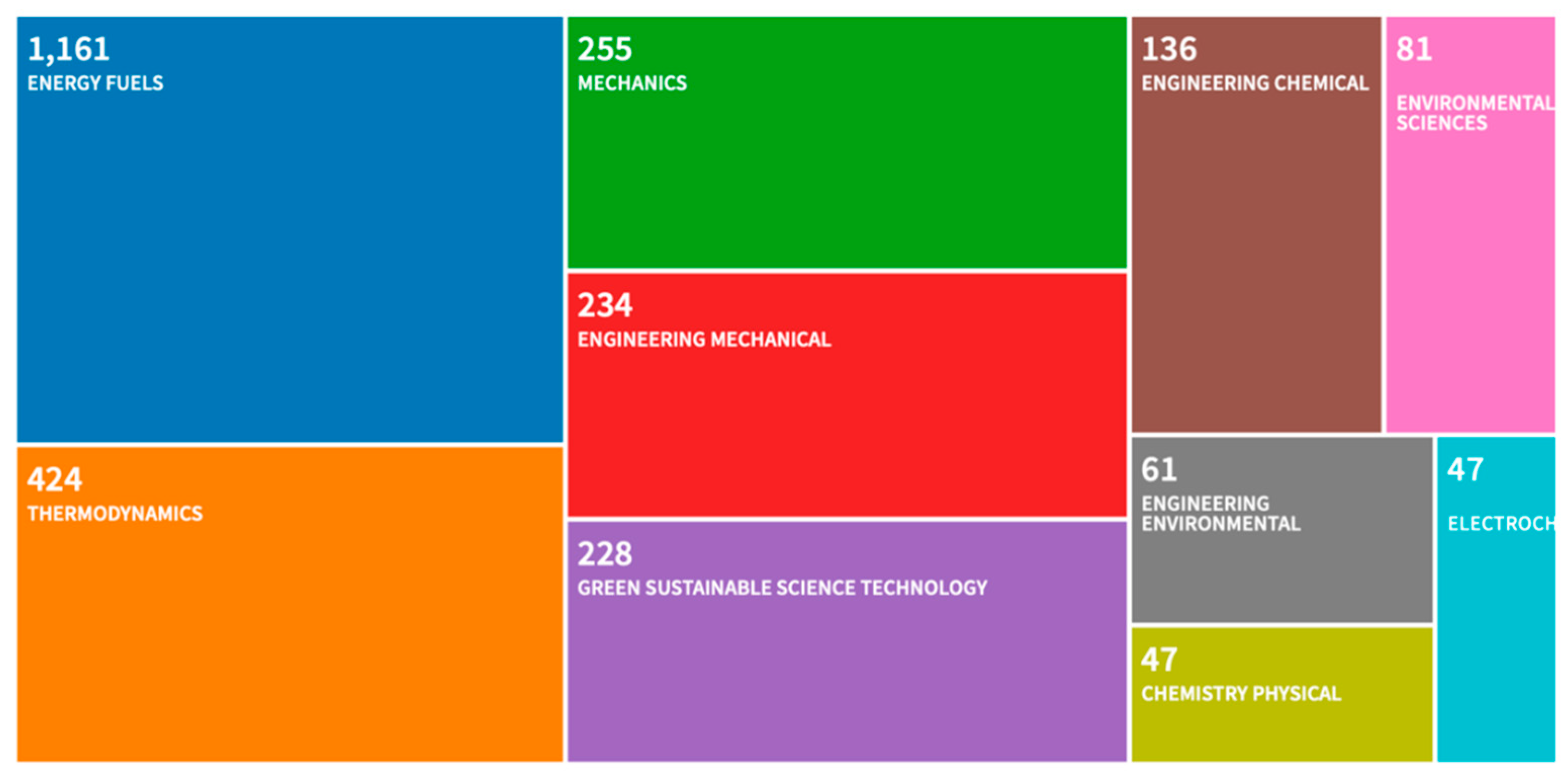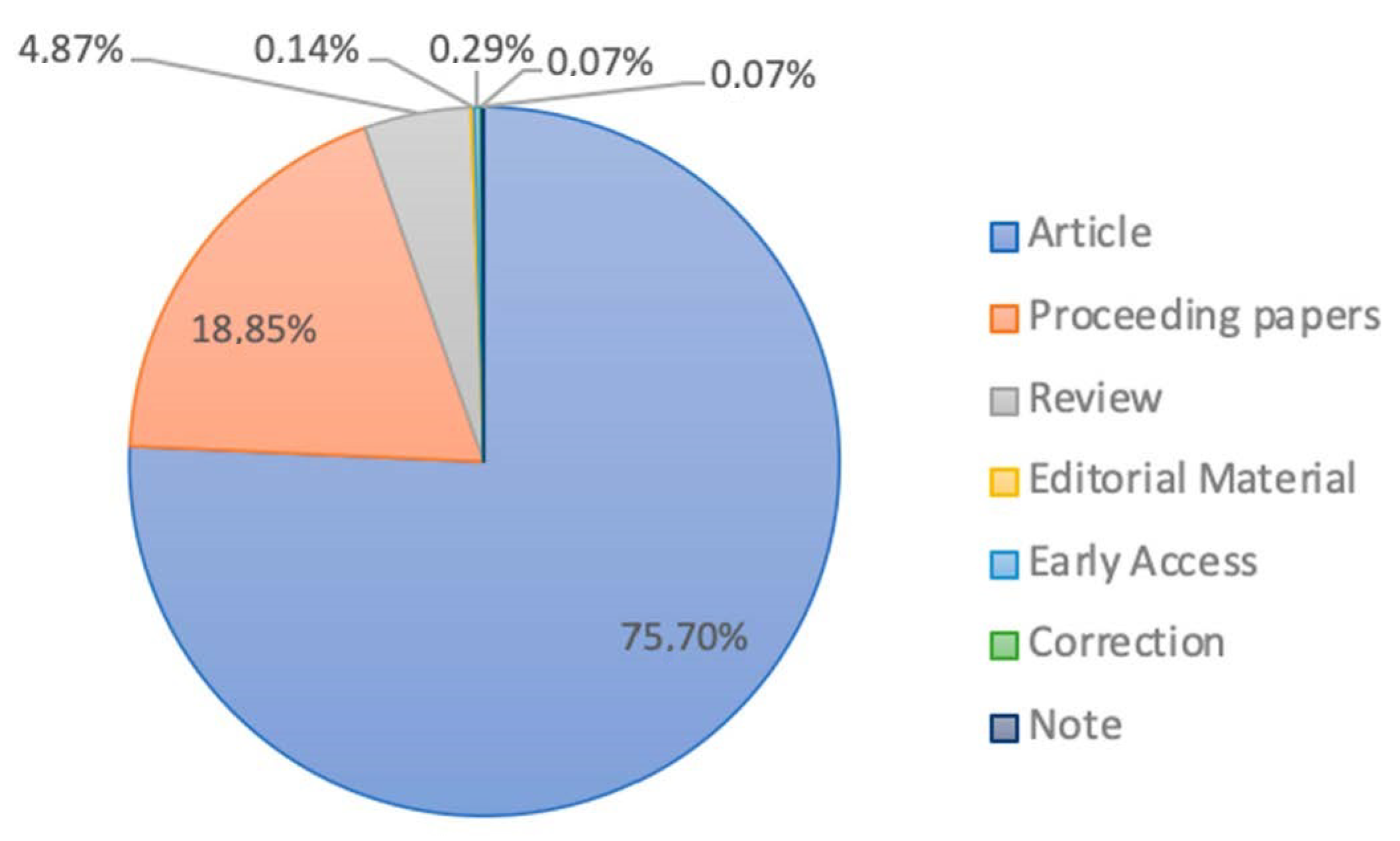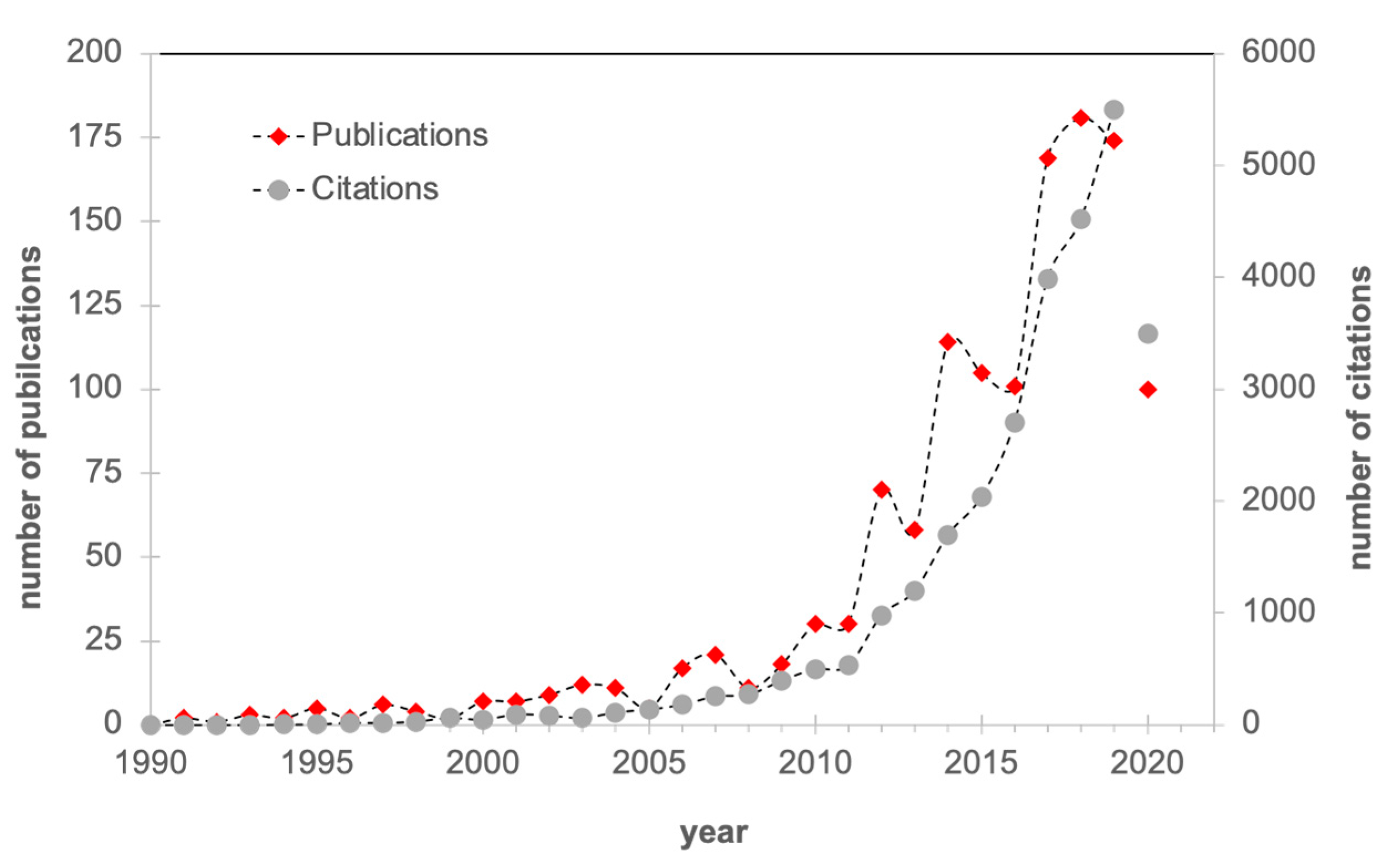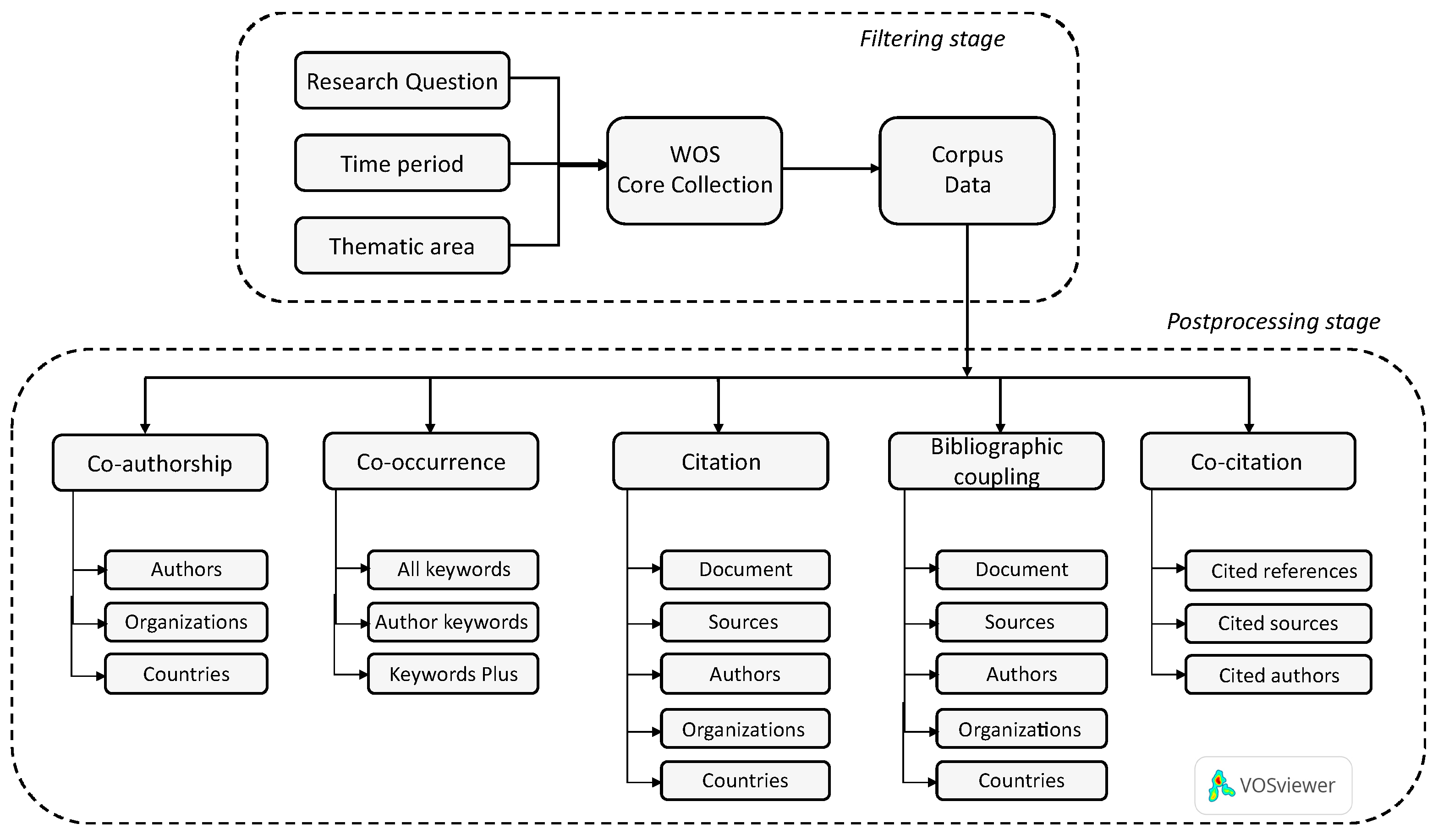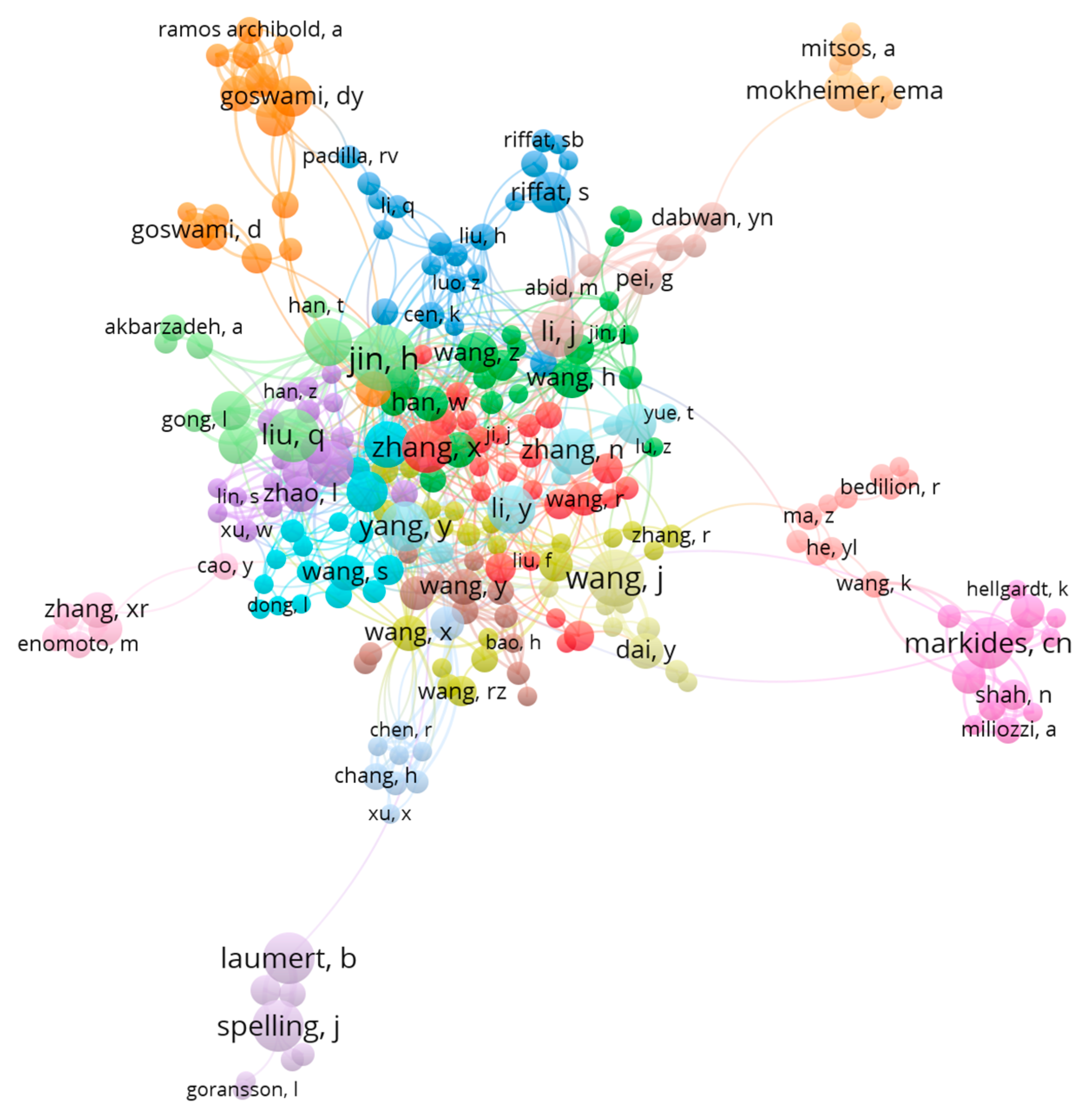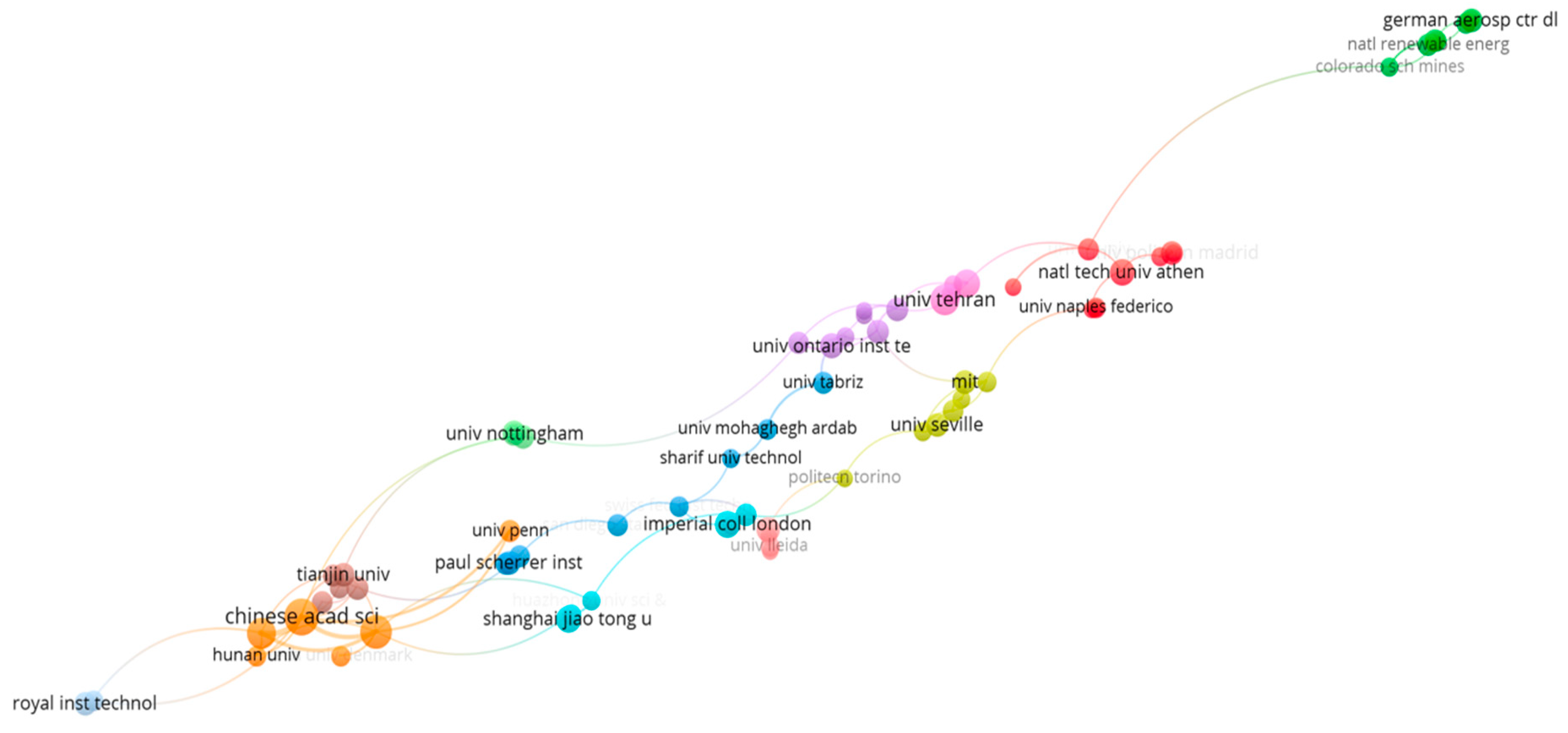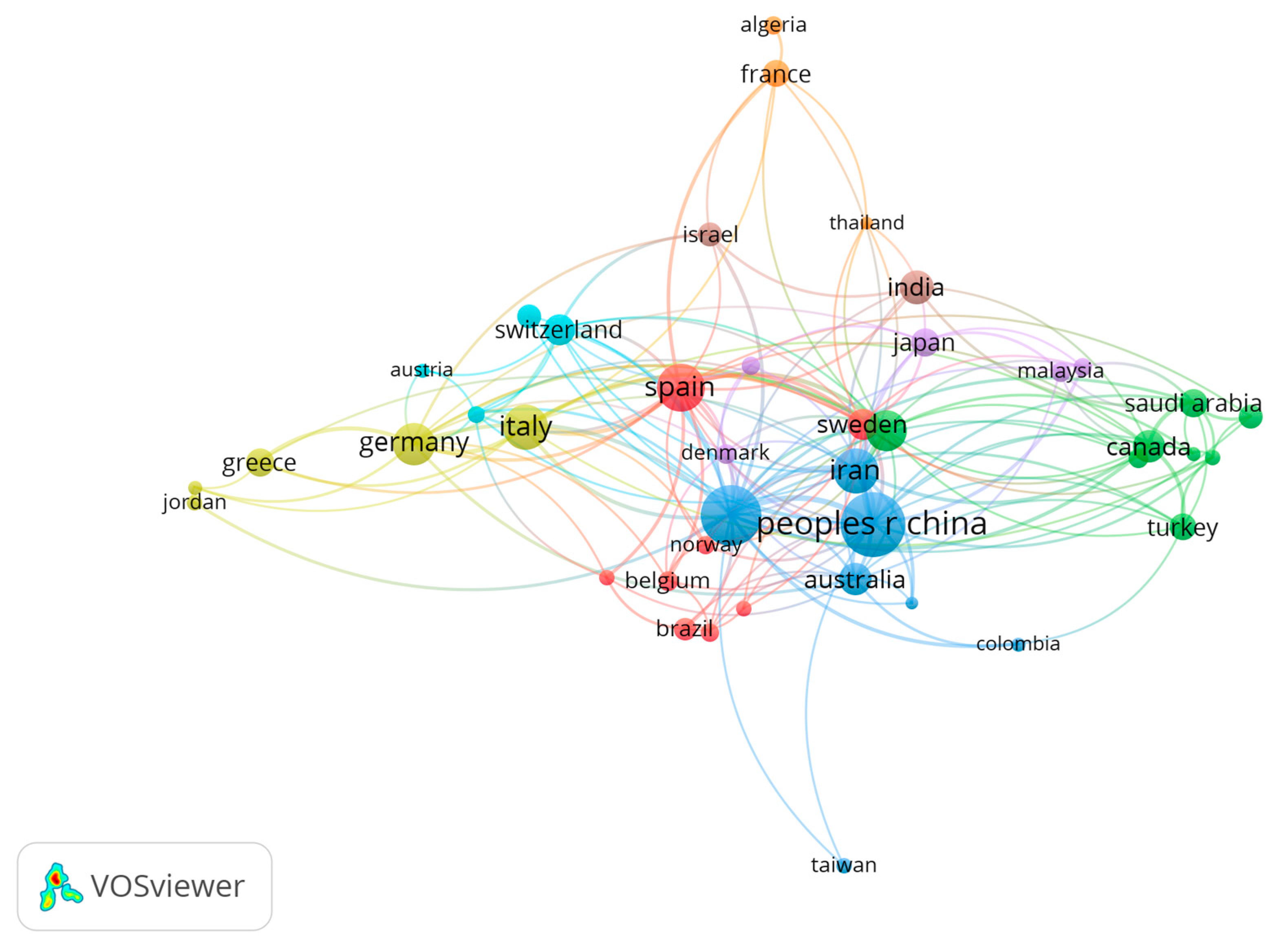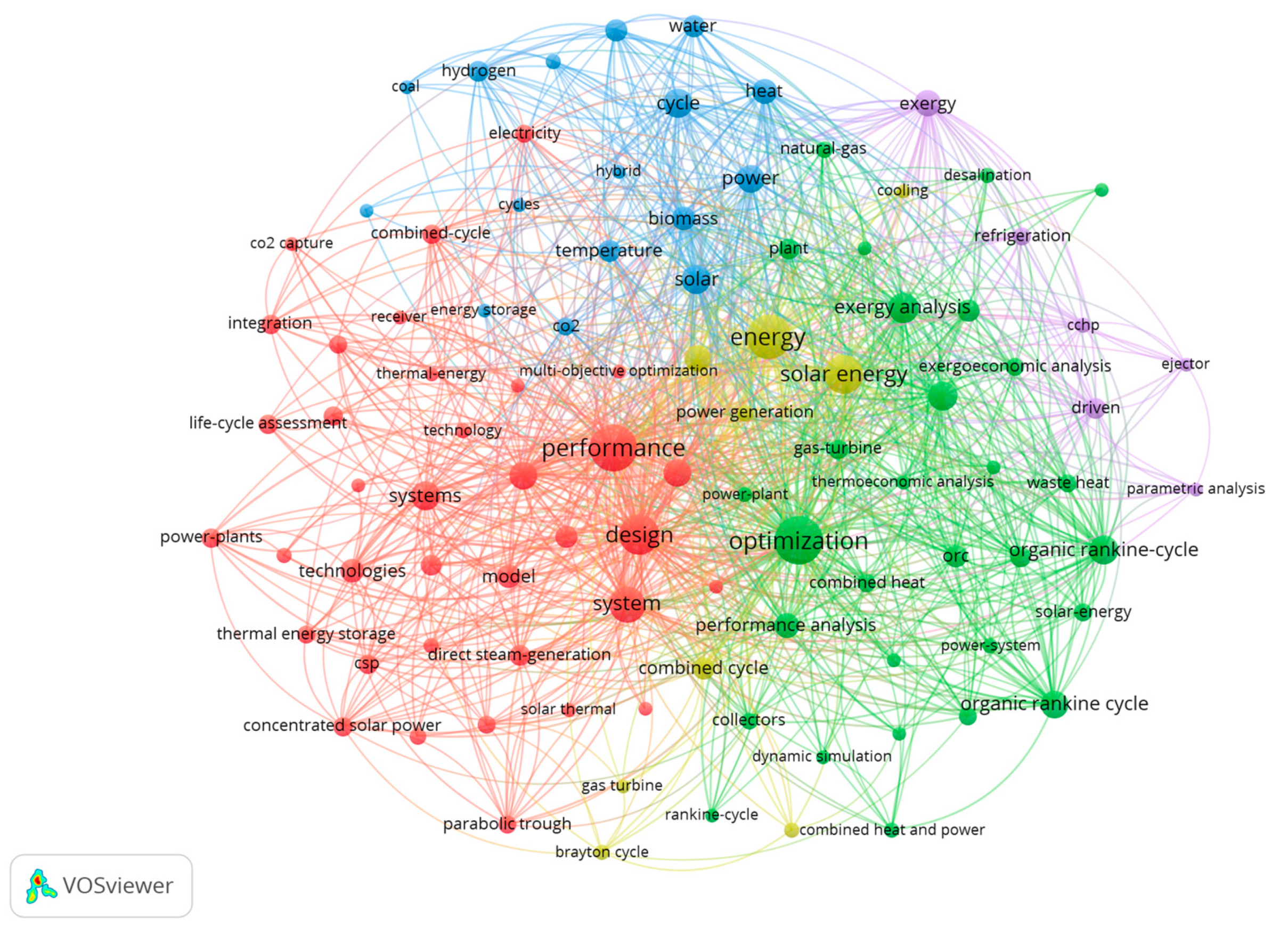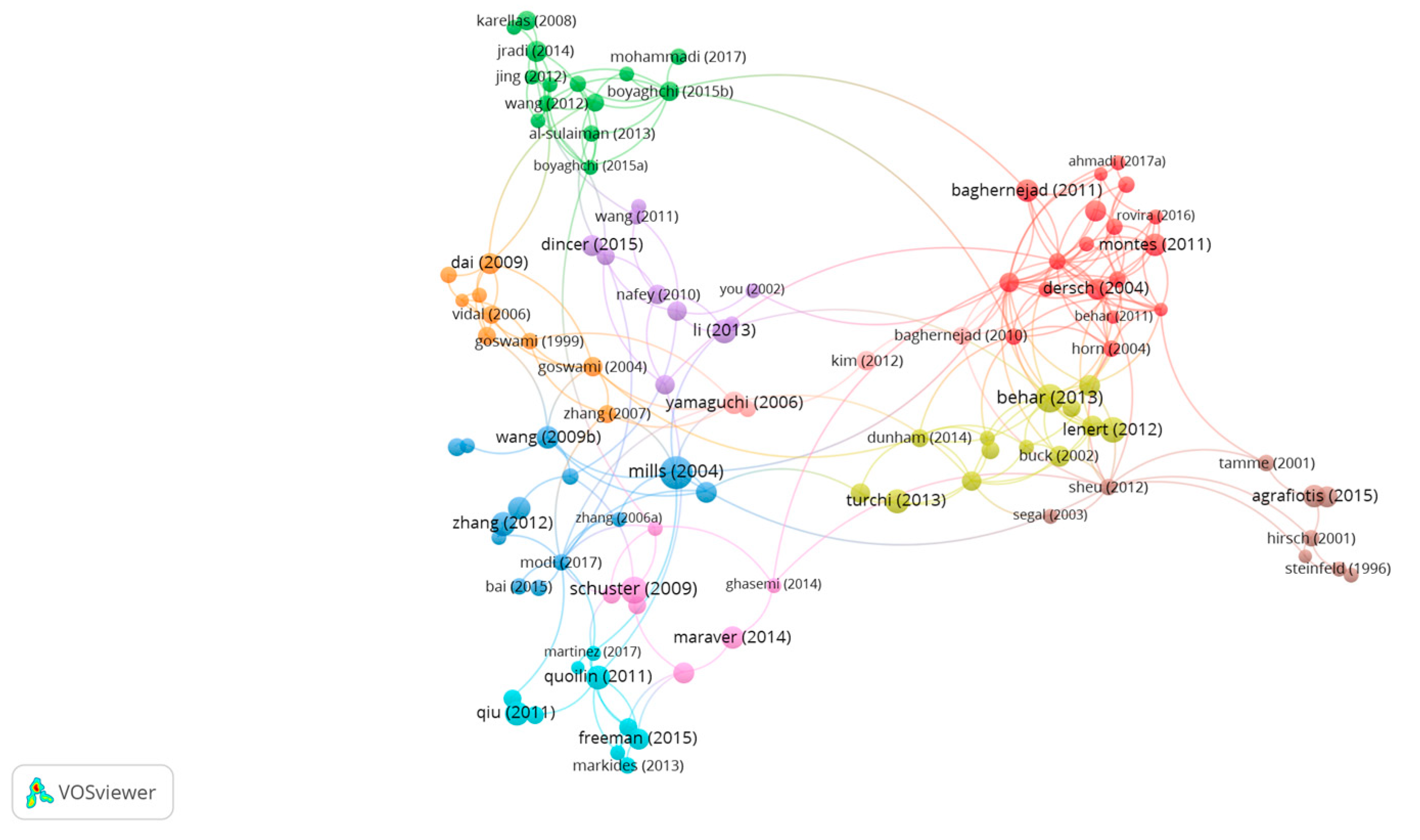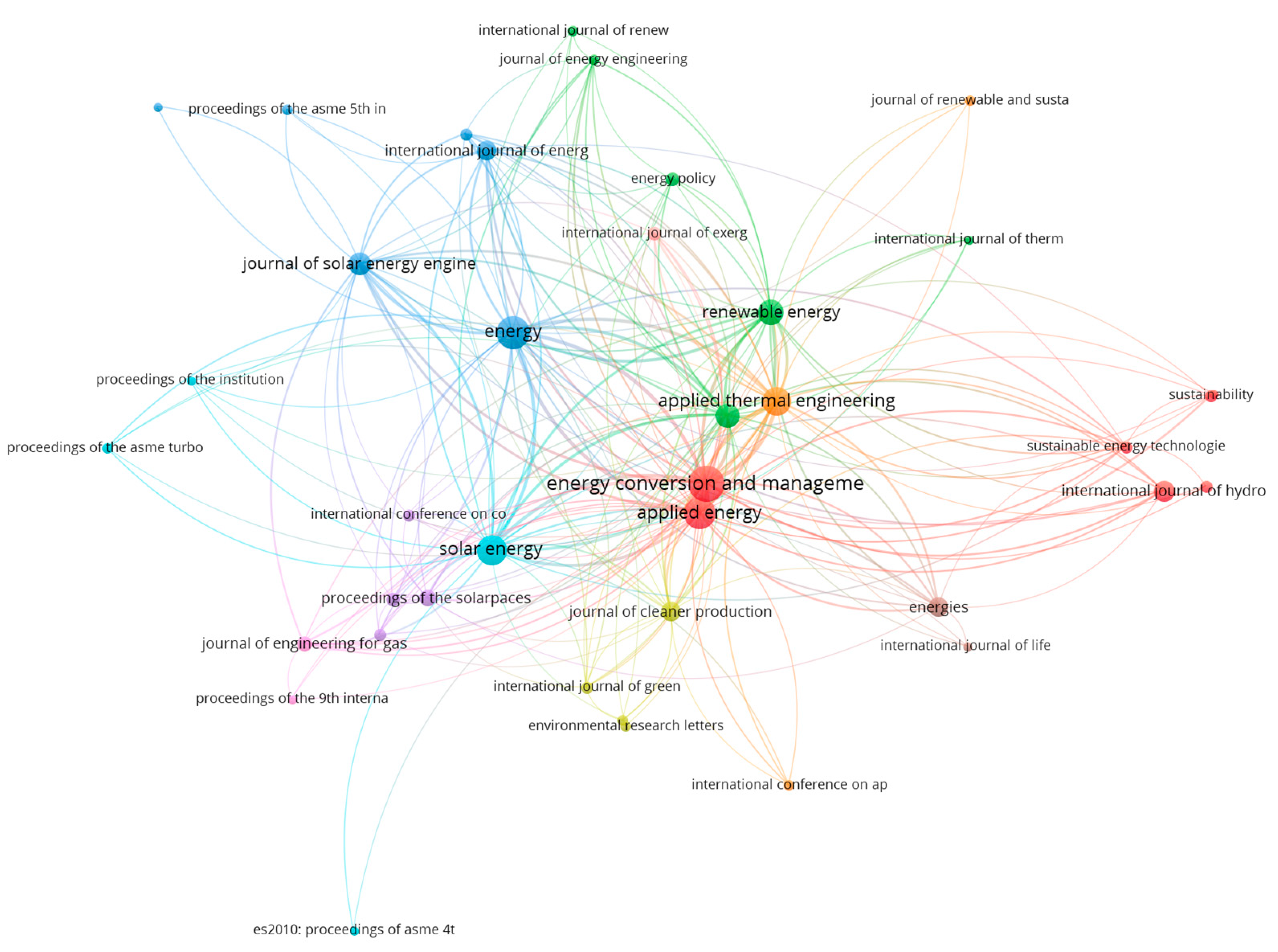1. Introduction
Human development indicators and societal developments are tightly bounded to extensive energy consumption [
1]. That trend is particularly sharpened for emerging economies, where the increase of middling social classes and the access to new technologies is increasing the energy demand. We as a society demand more commodities, and we do not want to give up to our high living standards [
2]. On the contrary, keeping the traditional energy scenario that still relies on thermal energy conversion, and that is dependent on fossil fuels (coal, gas and oil) and nuclear energy, has shown a clear impact on global warming and climate change. Therefore, a change of the energy generation paradigm is required if we want to meet society, users and environmental demands. In that scenario, several agreements have been signed over the last few decades regarding climate protection and the reduction of greenhouse gases and pollutant emissions, from the earlier Kyoto protocol in 1997 [
3], the Paris Climate Agreement in 2015 [
4], and more recently the COP25 Climate Change Conference in 2019 [
5] and the United Nations Sustainable Development Goals declaration [
6]. Under those 17 UN Goals, three of them have a direct impact on our energy model. Those are; ‘Affordable and Clean Energy’ (goal 7); ‘Industry, Innovation and Infrastructure’ (goal 9) and ‘Climate Action’ (goal 13). On the same line, several countries are making a big effort in the energy transition with the support of programs such as the 2030 Climate and Energy framework, regarding its target to achieve a 32% share for renewable energy and 40% cuts in greenhouse gas emissions (from 1990) [
7].
In this near-to-mid future scenario with a high penetration of renewable energy sources, new grid challenges and difficulties—such as curtailment, service disruptions or negative bid prices—may appear [
8]. That is based on the extensive deployment of the so called non-dispatchable renewable energy resources, such as wind energy and solar photovoltaics. Despite the competitive cost of those technologies, they cannot meet users’ grid demands when they are not coupled to energy storage systems, which is translated into the aforementioned difficulties. Notwithstanding the latest advances and cost-reductions seen on electrochemical energy storage systems (batteries) for wind and PV plants [
9], the storage of large amounts of electricity at a competitive price has not been solved yet. Recently, different alternatives (rather than electrochemical storage) for wind and photovoltaics have been discussed, such as Compressed Air Energy Storage (CAES) systems [
10] or Thermal Energy Storage (TES) systems [
11] based on liquid molten salts. Even the so-called ‘Carnot-Batteries proposal’ for the replacement of coal steam generators from conventional coal thermal power plants by molten salts electric heaters and TES tanks to use surplus renewable electricity have been proposed [
12]. However, in those cases, exergy destruction appears, based on the multiple energy conversions involved (electrochemical, thermal, mechanical and electrical).
A simpler alternative with a proven track of record for commercial applications gained attention couple of decades ago. That technology is known as Concentrating Solar Thermal (CST) energy, which uses mirrors and optical devices to reflect and focus solar beams into a particular area where a device—a solar reactor or receiver, depending on the final application—is located [
13]. In particular, a thermal fluid (water, air, or molten salts, typically) can be passed through that receiver in order to absorb solar radiation and convert it into high fluid enthalpy. Later, that hot fluid can be stored in TES devices and/or transferred to the working fluid (steam or air) to run the turbine of a power cycle in order to generate electricity. That series of transformations is known as Concentrating Solar Power (CSP), which still accounts for less than 1% of all electricity generation, with a total 6.45 GW of installed power, with Spain, the US, and recently China and MENA region countries being the main contributors [
14]. Recently, great interest has been focused on CSP based on cost–production reductions, with bidding projects such as Cerro Dominador at 11.4 c
$/kWh (2014), or the DEWA project (under construction) with a bid of a 7.3 c
$/kWh combined solar tower and parabolic trough plant in Dubai. The cost reduction in the technology appears to be based on learning curve effects, scaling-up technologies and the larger number of players joining that technology.
Nowadays, new ideas and proposals are seen as the next development steps for CSP technology. Some of those ideas include hybrid concepts [
15], whether they are applied together with conventional thermal power plants such as coal-hybridization [
16] or hybrid CSP/PV plants configurations [
17,
18]. Also under investigation are the use of advances in working fluids, such as supercritical steam [
19] or supercritical CO
2 [
20,
21,
22]; the use of high temperature heat transfer fluids [
23]; high temperature TES [
24] and high temperature receivers [
25,
26]; as well as the use of highly-efficient power cycles [
27,
28,
29]. The latter is one of the main hot topics in thermal energy conversion technologies, and in CSP in particular. The main feature drawing the attention of CSP technologies is its ability to decouple energy harvesting and electricity generation when it is coupled to a TES system. Besides this, this TES system is inexpensive (compared to equivalent thermochemical energy storage solutions) and it allows large bulk storage.
Regarding the utilization of CO
2 under supercritical conditions for electricity generation by means of a power cycle, it has gained incredible attention over the last couple of years, mainly for CSP and heat recovery applications. In fact, that technology is seen as the philosopher’s stone for electricity generation in the near future, with theoretical conversion efficiencies above 50% for the medium temperature range (550–650 °C), and which could exceed 60% for temperatures in the range of 900 °C [
30]. There is a vast literature review in that topic that even lead to a bibliometric economic review [
31]. Despite the great interest of researchers and scientists in that topic [
32], several scholars listed out a number of challenges and difficulties that are limiting the deployment of that technology [
33,
34]. The main ones can be summarized as its corrosive and solvent nature at high temperature and pressure; and its very high handling pressures (around 300 bar), which make its direct storage more difficult. On the contrary, there is also a long enough list of benefits, such as its high density at the compressor inlet (close to a liquid, but with a viscosity and diffusion that is as high as a gas); its high energy density (that is related to the compactness of its designs); its suitable supercritical temperature, which is close to ambient conditions (31 °C); its stability; its non-flammable, non-toxic nature; and obviously the abovementioned very high efficiency for a moderate temperature range. Despite the high working pressures of sCO
2 cycles, one needs to keep in mind that the power cycle operates at a moderated pressure ratio (around 3.0) compared to conventional Brayton cycles, which imply smaller and more compact turbines, and the fact that its critical point appears at a lower pressure than the supercritical conditions for water steam (220 bar), which results in fewer turbine stages and reduced pumping losses. Furthermore, the sCO
2 cycle might operate at a temperature close to 1000 °C, due to fluid nature stability [
35]. Despite the general interest in that technology, the abovementioned technical challenges are still conditioning its further realization.
On the contrary, it is widely known that existing Combined Cycle power technologies allow for very high electricity conversion efficiencies (above to 50%) based on their highly recuperative heat nature. This is achieved by combining high temperature energy conversion through gas Brayton cycles together with medium temperature two-phase Rankine power cycles. The first ones are characterized by their very high working temperatures (above 1000 °C), which is translated into high efficiency potential regarding the second law of thermodynamics. However, compressing a gas (typically air) is a highly energy demanding process, and the divergence appearing on the enthalpy-entropy diagram, together with the limited expansion ratios on the turbine side, results in the very high temperature of the exhaust gases, which compromises its high efficiency prospects. Nonetheless, modern gas turbine technologies allow for conversion efficiencies in the range of 35% to 45%, depending on the turbine power [
36]. Rankine power cycles are characterized by their low energy consumption during the fluid compression process (a pump is required in order to increase the pressure of a liquid) compared to the very high energy that can be extracted from the steam phase in a turbine. However, the use of a two-phase working fluid requires a high latent energy consumption during the evaporation process inside the boiler, which reduces its high efficiency prospects. The newest advances on Rankine cycles include water chain preheating, steam reheating, and the use of supercritical one-through boilers, which lead to efficiencies close to 45% for typical water steam temperatures [
37].
Despite both the maturity of CSP technology (with more than 20 years of commercial experience) and the maturity of Combined Cycles, the standard water–steam subcritical Rankine cycle has been imposed as the only commercial solution for large CSP installations (whether solar tower plants, parabolic through plants, or linear Fresnel plants). This is based on their suitability for being coupled with molten salts central receivers (that can be heated up to 565 °C) and parabolic trough collectors (up to 400 °C). However, the application of Combined Cycles for Concentrating Solar Power, also known as Integrated Solar Combined Cycle (ISCC), would meet both requirements regarding conversion efficiency improvement and cost generation reductions.
In that context, this paper aims to analyse the different approaches and the growing interest in the ISCC concept through a bibliometric study and the analysis of the publication trends in that topic. In order to do so, a data analytics study was performed, which provided some interesting facts related to which are the main working groups on ISCC topic, which are the most common keywords defining ISCC topics, or which are the main hubs, countries and connections among researchers. Those evidences will help to elucidate the research future of ISCC while helping scholars to focus their research in the CSP and renewable energy fields.
In that context, the bibliometric methodology that is described in this paper could serve as a tool for researchers to approach to any scientific topic from a Big data perspective. Indeed, during their whole scientific career, it is crucial for scholars to learn from relevant works from the same area of expertise, in order to discard, reject or support their assumptions based on similar research works. Usually, this stage is commonly known as the literature review, and it is the cornerstone of any research activity, from Masters theses, to PhD theses, to research papers, and it is even crucial for successful applications for project proposals and funding schemes. Despite the importance of that stage, the depth of that analysis depends in practice on previous expertise and personal experience, since it is typically addressed as a human-based activity that requires many years of experience. Nowadays, that exercise becomes even harder to attain, due to the increasing number of research papers being published, the appearance of new journals and platforms, and the infamous motto “publish or perish”. Fortunately, the developments on Big data, data mining and data analytics that have became popular in social networks analysis and in behavioural sciences [
38] can be also applied to Energy research and other technical sciences. Big data treatment through nodes and networks analysis has great potential for engineering research applications, and in particular to the topic of ISCC, since it allows researchers and scholars to understand trends and topics related to ISCC technologies, nurture future collaborations among different research groups and researchers, and to increase their awareness on the topic’s importance. Last but not least, it establishes data analytics as one of the core activities of the scientific method by providing researchers a powerful, and yet unfamiliar, tool. Besides this, it is proposed as a methodology to thoroughly address a research topic that was rather manual, time consuming and biased, up until this time. The application of bibliometric studies for renewable energy topics is quite recent; some examples can be found, such as the use of community detection tools for scientific collaboration analysis [
39], or keywords trend evolution for the study of interactions between the economy, energy and the environment [
40]. Bibliometric studies have also shown their potential as a tool for the analysis of the research impact of a country [
41], or to analyse the global transition to low-carbon electricity [
42]. In particular, and related to solar energy, very few bibliometric studies could be found, with most of them having been published recently [
43,
44,
45].
This paper has been organized according to the following structure; firstly, energy and technology contexts are presented. After that, the works’ relevance is discussed, together with the data mining source and the research method employed. Later, corpus data is analysed using VOSviewer software, which is a tool based on the use of network data for the creation of maps, and for visualizing and exploring them [
46]. Finally, conclusions are drawn, and recommendations are compared to another hot topic in the CSP field.
4. Discussion
The results presented in
Section 3 (Results) and the tables gathered in
Appendix A are relevant for solar energy scholars because some trends and research topics can be derived from them. Based on the detailed keyword information presented in
Table A4, it can be deduced that most publications addressed modelling and performance optimization, with 857 keyword appearances. In particular, medium and low temperature studies were performed, as is indicated by the 59 keyword appearances for ‘parabolic trough studies’ and 246 keyword appearances for ‘Organic Rankine Cycles’ (ORC). Furthermore, a great interest in ISCC applications for combined heat and power generation as related keywords appear in 217 publications. It is also relevant that thermal energy storage studies were applied to ISCC topics, with 165 publications including related TES keywords. Hydrogen production was also related to ISCC publications, with 99 keyword appearances. To a lesser extent, ‘life-cycle-analysis’ (LCA) was considered for ISCC studies, with 82 keyword appearances. The less studied topics related to ISCC were ‘desalination’ (26 keyword appearances), ‘phase-change material energy storage’ (24 keyword appearances), ‘CO
2 capture’ (22 keyword appearances) and ‘hybrid plants’ (20 keyword appearances).
In this section, the ISCC topic is also compared to another hot energy topic: supercritical CO
2 cycles (sCO
2). As it was referred to in the introduction, sCO
2 cycles for electricity production are one of the hottest research topics, with a clear interest for CSP application. Furthermore, both technologies are highly efficient and advanced solutions for electricity generation, both are of interest for CSP applications, and, in some cases, they were studied together. For this reason, the bibliometric study presented in this work was compared to recent bibliometric study for sCO
2 [
31].
For comparison purposes, bibliometric indicators such as the number of publications, the total number of citations, authors, institutions, countries, and the most relevant publications were compared and analyzed for both technologies, and are gathered in
Table 12. The bibliometric parameters and indicators were normalized due to both studies covering a different period of time; for the case of this work, the ISCC publications were collected from 1990 to July 2020, while for the sCO
2 bibliometric analysis, the timespan covered 2000 to 2019.
As it can be observed in the table, both technologies are hot topics for Energy research, with 1277 ISCC publications and 724 for sCO
2. Furthermore, those topics have grabbed the attention of a large number of researchers and institutions from all over the world. In general, it could be said that the ISCC topic involved double the number of researchers and institutions compared to the sCO
2 topic. However, if normalized indicators are compared, similar numbers can be observed, such as, for example, the case of average number of publications per year, which was 42.6 for the ISCC topic and to 38.1 for sCO
2. For example, comparing the ratio between the total number of publications and the number of institutions, the average publishing ratio for sCO
2 (1.33) is higher than that for ISCC (1.16). Comparing the total number of citations, the differences between the ISCC and sCO
2 topics become more evident; for example, the number of citations per year for ISCC papers reaches 940, while for sCO
2 it is 511. One of the reasons behind that trend could be the fact that the research interest for sCO
2 cycles appeared later than for ISCC due to the technical difficulties discussed for supercritical CO
2 compared to the mature technology of Combined Cycles, as was discussed at the introduction. That can be confirmed from both of the publishing evolutions shown in
Table 13.
As it can be observed, in the year 2010, there were 30 publications on ISCC, but only 11 publications for sCO2. Despite the rapid research deployment of sCO2 in recent years leading to 131 publications by 2019, still more papers were reported for the ISCC topic (174), which explains the lower citation ratio.
Comparing the most relevant countries in terms of publishing, it can be observed in
Table 14 that, for both the ISCC and sCO
2 topics, China and United States are the main publishing countries, while Spain is the third highest publishing country for ISCC, as is South Korea for sCO
2.
It can also be observed in
Table 14 that the average citation ratio (total number of citations divided by the number of publications) for those countries for the ISCC topic (around 22 citations per publication) is higher than for the sCO
2 topic (around 15 citations per publication). Despite the high research output from those countries, some differences were found regarding the main publishing institutions. For the ISCC topic, two Chinese organisations and one Iranian organization were the most productive, while for the sCO
2 topic, institutions from China, South Korea and United States were relevant. Regarding the most relevant authors, it is interesting that authors in sCO
2 topics had more publications than the authors retrieved for the ISCC topic; however, the citation ratio (the number of citations divided by the total number of publications from an author) was higher for ISCC topics. The relevance of the conference proceedings for sCO
2 topics can also be observed, where the Proceedings of the ASME Turbo Expo were the first publishing platform in terms of documents (113), while the ‘Energy’ journal was in second place for both ISCC and sCO
2.
Table 15 compares the most cited publications for both the ISCC and sCO
2 topics. As it can be observed, most of the relevant publications for ISCC had more total citations than for the sCO
2 topic, but the ratio of citations/year was half of the ratio observed for the sCO
2 topic. The publishing sources also differed, with the exception of
Renewable and Sustainable Energy Reviews.
Finally, it can be observed in
Table 16 that the most frequent keywords for the ISCC topic were quite general (‘optimization’, ‘performance’, ‘energy’), while those for sCO
2 were the name of the topic itself (‘supercritical carbon dioxide’, ‘Brayton cycle’, ‘supercritical CO
2 Brayton cycle’). It was also observed in the detailed keywords information provided in
Table A4 that the most common keywords for the ISCC topic were related to modelling and simulations.
